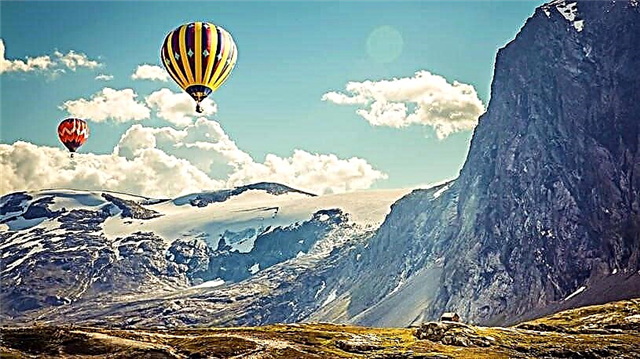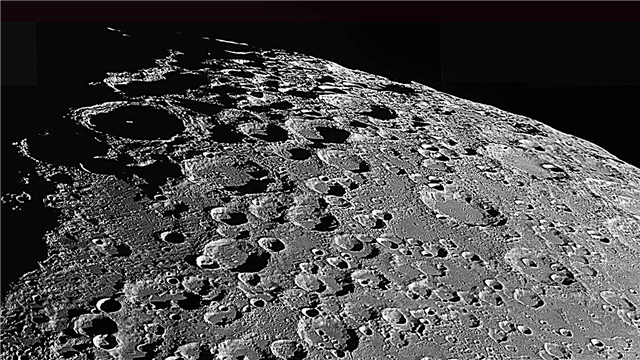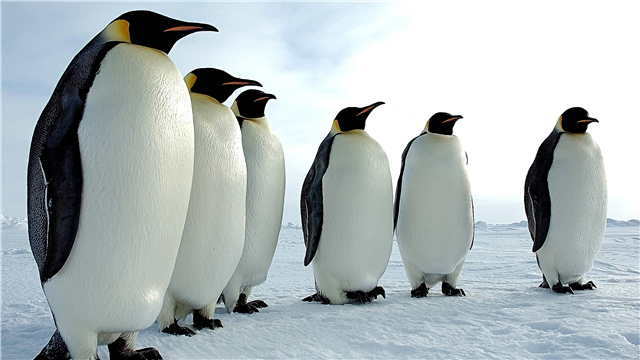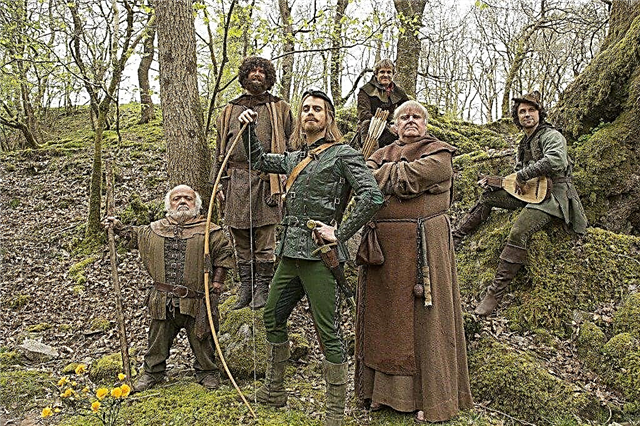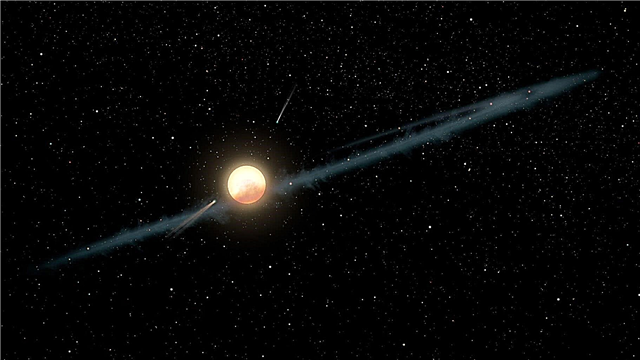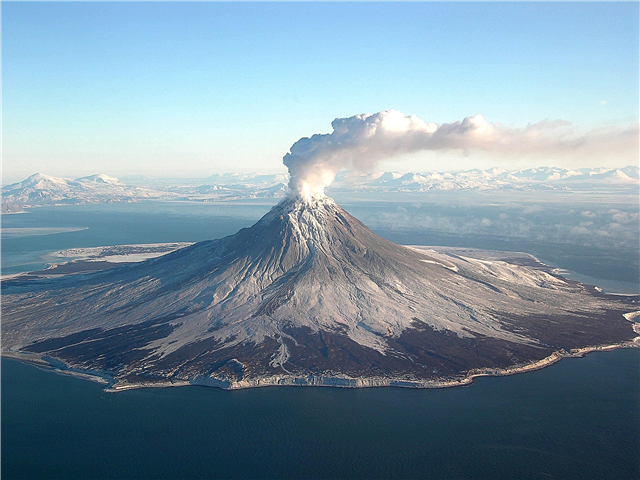
What is geology?
Geology is natural science that studies the Earth, the materials of which it consists, the structures of these materials and the processes that act on them. An important part of geology is the study of how terrestrial materials, structures, processes, and organisms have changed over time.
What do geologists do?
To summarize, geologists solve the following problems:
- predicting the behavior of Earth systems and the universe;
- the search for natural resources such as groundwater, oil and metals;
- soil conservation and agricultural productivity;
- development of natural resources in ways that do not harm the environment;
- maintaining the quality of water supply;
- reduction of losses and property losses due to natural disasters such as volcanic eruptions, earthquakes, floods, landslides, hurricanes and tsunamis;
- creating a system of geological control over the natural environment and predicting the impact of human activities on it;
- determination of the balance between society’s need for natural resources and the need to maintain healthy ecosystems;
- understanding of global climate models.

What does geology study?
Geology is a science that studies solid Earth, the fossils and rocks of which it consists, as well as all the processes that influence its formation and changes over time. But geology is not limited only to the Earth - the analysis of rocks of other planets, satellites or other celestial bodies is also in its competence.
At the present stage of development, geology covers many geographical sciences - hydrology, meteorology, climatology and others - therefore, it is considered one of the main disciplines that study the planet.
Geology is trying to know what is on the surface of the Earth, but also what is hidden beneath it, as well as all the processes that affect this complex system. Science is developing methods by which it is possible to determine the age of found rocks and their history. By combining these tools, geologists can keep a chronology of the geological history of the Earth as a whole, as well as determine the age of our planet and all the global changes that took place in it.

Thanks to geology, we are aware of the main movements of tectonic plates that occurred during the evolution of the planet, the main stages of development of life and past climatic zones that reigned on Earth.
Geologists use a wide range of methods to understand the structure and evolution of the planet, including:
- field work;
- breed description;
- geophysical methods;
- chemical analysis;
- physical experiments;
- mathematical modeling.
From a practical point of view, geology is important for exploration and exploitation of mineral and hydrocarbon resources, assessment of water resources, understanding of natural hazards, eliminating environmental problems and providing information on past climate changes. Geology is the main academic discipline.
Mineralogy
What are minerals?

Mineral is a solid chemical compound that can be found in nature in its purest form. Minerals are often associated in people with rocks, since the latter consist of the former. Rocks, in turn, may consist of one or more minerals. Compounds that are found only in living organisms do not belong to minerals, although there are a number of exceptions. So, if we talk, for example, about minerals that are biogenic (calcite) or organic (mellitus), then they belong to minerals. It is also worth considering that living organisms themselves often produce inorganic materials that are often present in rocks.
The mineral must meet five requirements:
- must be found in nature;
- be inorganic;
- be solid;
- have a certain chemical composition;
- Have an orderly internal structure.
In geology and mineralogy, the term “mineral” is usually used to refer to mineral particles: crystalline compounds with a fairly well-defined chemical composition and a specific crystalline structure.
Minerals without a specific crystalline structure, such as opal or obsidian, are correctly called mineraloids, that is, mineral-like substances. If a chemical compound can occur in nature with different crystalline structures, each structure is considered a different mineral species. So, for example, quartz and stishovite are two different minerals consisting of the same compound - silicon dioxide.
Rocks

Rocks are a natural combination of minerals and mineral-like substances called mineraloids. When a material solidifies or crystallizes from lava or magma, it is igneous rock. Further, igneous can become sedimentary due to the action of wind and destruction. At the last stage, the rock under the influence of heat and pressure changes its mineral content and becomes metamorphic. But the circle from the third step can go over again if the stone begins to melt again.
Most of the research in geology is related to the study of rocks, because it is they who carry the entire history of the Earth.
Rock types
There are three main types:
- igneous;
- sedimentary;
- metamorphic.
Each breed, in turn, has certain minerals in its structure. Each mineral has certain physical properties, and there are many tests to determine each of them.
Samples can be checked for:
- radiance: the quality of light reflected from the surface of a mineral;
- color: basically, each mineral has a characteristic color, which is used for diagnostics, but impurities can change the appearance of a substance;
- streaks: performed by scratching the sample on a porcelain plate. The color of the strip may help to name the mineral;
- hardness: scratch resistance of the mineral;
- fracture pattern: a mineral may have a crack or cleavage, the first option being a gap in uneven surfaces, and the second a gap along closely spaced parallel planes;
- specific gravity: the weight of a certain volume of mineral;
- hissing: hydrochloric acid is required to be instilled into the mineral to check for hissing;
- magnetism: the use of a magnet to test for magnetism;
- taste: minerals can have a distinctive taste, for example, it tastes like table salt;
- Odor: Minerals may have a characteristic odor. For example, sulfur smells like rotten eggs;
Fossils

The fossil is the result of the process of fossilization of organic material. This petrification is caused by the process of permineralization and diagenesis. As a result, organic material is replaced with minerals over time. A good example of petrification is the petrified tree. With permineralization, the original cellular structure becomes fossilized; with diagenesis, the cellular structure of the body is lost.
Any organism, from bacteria to vertebrates, can become a fossil. Thanks to this phenomenon, geologists can get vivid evidence of a past life on our planet. Based on excavations and discovered minerals, scientists were able to study the formation of life millions of years ago.
Relief

Relief is a feature of the earth's surface, which is part of the terrain. Mountains, hills, plateaus and plains are the four main forms of relief. Minor types include valleys, canyons, valleys and basins.
The movement of tectonic plates below the Earth can influence and create new landforms, raising mountains and creating hills.Erosion caused by water and wind can wear out the land and create reliefs such as valleys and canyons. Both processes occur over a long period of time, sometimes such phenomena can take millions of years.
In fact, it took the Colorado River 6 million years to create the Grand Canyon in the US state of Arizona. The length of the Grand Canyon is 446 kilometers.
The highest relief on Earth is the mountain: Mount Everest, which is located in Nepal. It has a height of 8,850 meters above sea level. This is part of the Himalayas, which are located in several Asian countries.
The relief also appears under water in the form of mountain ranges and pools on the seabed. The Mariana Trench, the deepest form of relief on Earth, is located in the South Pacific.
Geological processes

Geological processes are dynamic processes that affect terrain and in general the surface of the Earth. The main geological processes are:
- weathering;
- erosion;
- plate tectonics.
These processes can be destructive in some cases, and constructive in others.
Erosion

Erosion is a natural process that most often occurs due to the fact that in one place the rocks and soil exfoliate and move to another. Such a phenomenon can wear out and destroy mountains, fill the plains, create and wipe the river from the face of the Earth. But such processes have been going on for many thousands of years. Although it is worth noting that erosion can be accelerated by the activity of a person who, through his actions - farming or mining - negatively affects the environment.
Weathering

Weathering is a process that destroys the existing terrain of the earth due to the influence of wind and water. The effects of weathering lead to the destruction of the upper layers of rocks. Some of these processes are mechanical, for example, expansion and contraction caused by sudden large changes in temperature, the tensile force of freezing of water in cracks, splitting caused by plant roots, and exposure to running water. So, roads require constant repair in the fall and spring, as the water that gets inside can simply destroy the asphalt - the same thing happens with the mountains.
Plate tectonics

Plate tectonics is one of the theories of scientists regarding the shape of the earth's relief. Experts suggest that the Earth's surface consists of 12 moving plates. Some of these plates do not correspond to the continental boundaries, and some include both the territories of the continents and the oceans. All of them are of different shapes and sizes and are in constant motion and move from 1.3 to 10 centimeters per year. Tectonic activity occurs at the boundaries of plates where they collide with each other, thereby causing earthquakes or creating mountains and hills.
There are various geological processes that are extremely dangerous for the world's population:
- volcanic eruptions;
- tsunami;
- climate change;
- floods;
- space effects, etc.
If you study such phenomena and understand their nature, then you can protect many people.
Geological history of the earth

The geological history of the Earth is the evolution of continents, oceans, atmosphere and biosphere. Layers of rocks on the surface of the Earth contain evidence of the evolutionary processes that undergo these components of the earth's environment. And the echoes of each geological process remain stored in an immense repository of information - rocks, which, like a textbook, are open for reading and will give knowledge to someone who can read them. Thanks to the zeal of geologists, we have a fairly detailed idea of the history of our home planet millions of years ago.
The role of geology
Like any other science, geology is created to make new discoveries and learn much more about the world around us.This discipline considers the most important problems of modern mankind - including the search for new sources of energy, its rational use, climate change, natural hazards, human influence on the environment, environmental changes on humans, water and mineral resources management.
By studying these issues, geologists, along with other scientists, can foresee the future of the Earth and study any changes that may occur. A key example is the analysis of climate change and how society must change in order to improve the Earth's future. Moving from fossil fuels to geothermal energy and other renewable sources, we can reduce carbon emissions and greatly reduce the effects of global warming.



